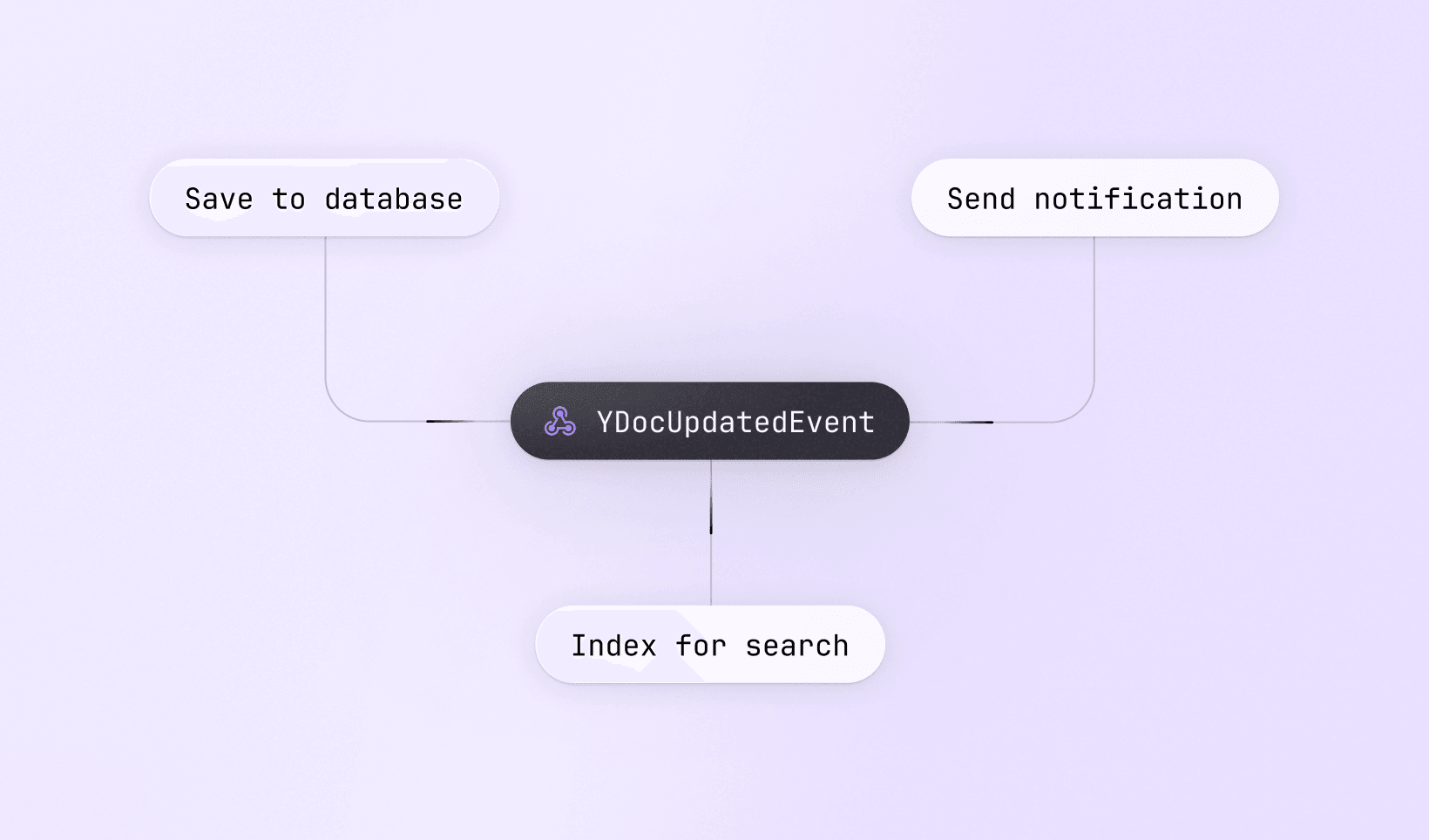Extend the capabilities of Yjs using our REST API and webhooks
Today, we'll dive into the different ways Liveblocks enables developers to extend Yjs, allowing you to integrate your document data seamlessly into existing systems with our REST API and webhooks.

In recent years, Yjs has grown to be the preferred way for developers to build collaborative rich text editors owing to its powerful features such as multiplayer undo/redo, lazy loading subdocuments, and offline support.
If you’ve already built collaborative experiences with Yjs, then you’ve probably discovered that integrating it with other parts of your system can be challenging. Because every update gets stored, Yjs documents can be hard to index, parse, and tend to grow quickly in size over time.
Today, we’ll dive into the different ways Liveblocks enables developers to extend Yjs capabilities in order to integrate Yjs data seamlessly into an exising system.
Update and retrieve documents with the REST API
Liveblocks provides access to a REST API, and with the launch of Liveblocks Yjs we’ve included some new endpoints specifically for Yjs.
Get Yjs documents
With the Get Yjs Document API you can retrieve Yjs document data for any given room.
The result of the query will be in JSON form—though note that the exact schema will be different for each editor.
We also have an API for getting a Yjs document as a binary update.
Update Yjs documents
It’s possible to update a Yjs document by REST API, using the Send a Binary Yjs Update API. Here’s a code snippet, showing how it works.
If you’re interested in using this, make sure to read our full guide on the topic:
Use Yjs triggered webhook events
We’ve added new Yjs-triggered events to our
Webhooks enabling you to
automatically perform custom actions in your back end, such as sending
notifications or saving your data to a database. This can all be implemented
this by listening to the
YDocUpdatedEvent, which runs
whenever a Yjs document is modified.
Yjs webhook events sent to your backend.

Our previous webhooks continue to work with Yjs too, for example you can respond to rooms being created and deleted, or users entering and leaving rooms.
Synchronizing Yjs document data to databases
When our webhooks and REST API are combined, it makes it easy to synchronize your Yjs document with a database. Here are some detailed guides on how to synchronize your Yjs document data to various databases:
- Synchronize Yjs with PlanetScale MySQL
- Synchronize Yjs with Vercel Postgres
- Synchronize Yjs with Supabase Postgres
This is just one possibility, out platform enables many use cases. For example:
- Parsing document data to notify users mentioned in a document.
- Recording a version history of your documents.
- Indexing your documents for a search form.
For the first time, this is now achievable with ease.
The most advanced platform for Yjs
Liveblocks is already the most advanced platform for Yjs, yet we have plans to extend Yjs even further, and we’re busy working on them right now—make sure to check back soon. We’re excited to see what you build with Liveblocks Yjs.
Ready to get started?
Join thousands of companies using Liveblocks ready‑made collaborative features to drive growth in their products.


